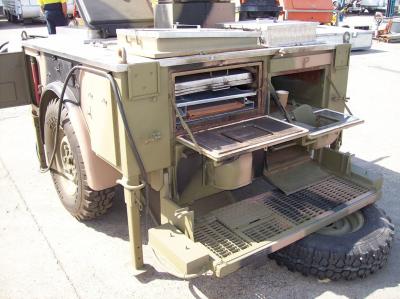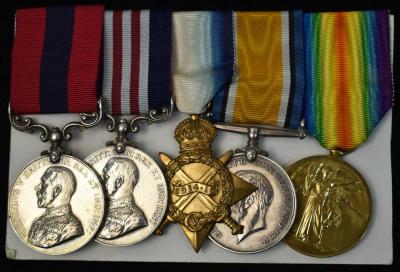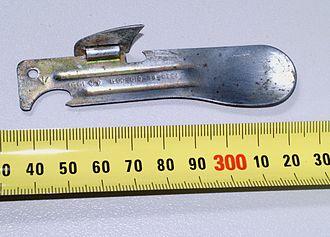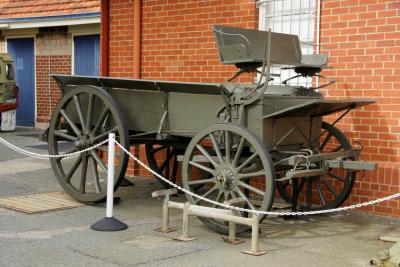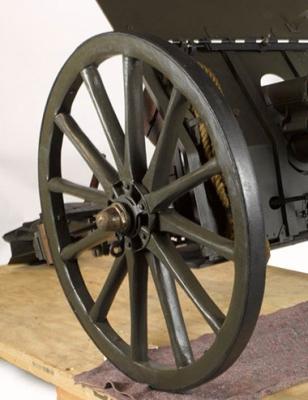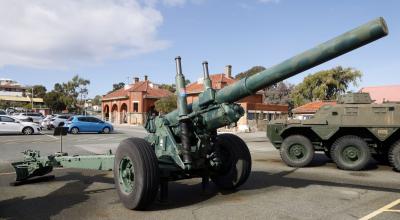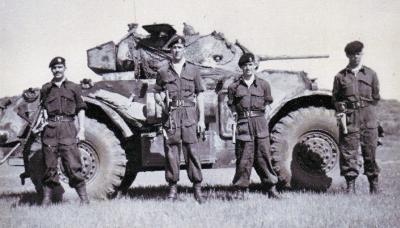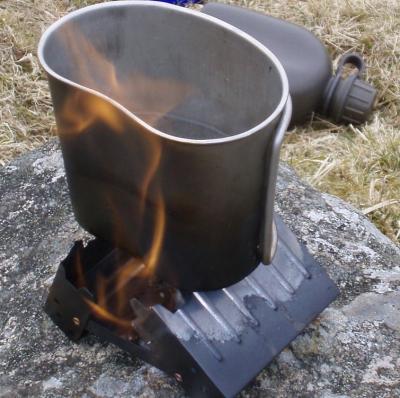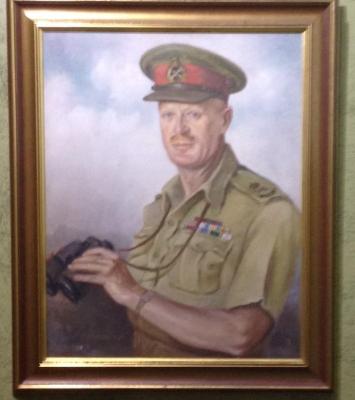Motorised Submersible Canoe "Sleeping Beauty"
The Motorised Submersible Canoe (MSC), nicknamed Sleeping Beauty, was built by British Special Operations Executive (SOE) during World War II as an underwater vehicle for a single frogman to perform clandestine reconnaissance or attacks against enemy vessels. Constructed of mild steel, the canoe was 3.86 metres long with a beam 0.69 metres. Propulsion was provided by a 5 hp electric motor powered by four 6-volt batteries giving a top speed of 4.4 knots (8.1 km/h). The MSC had a range of 30 to 40 nautical miles (56 to 74 km) at a cruising speed of 3.1 knots (5.7 km/h). Its maximum operating depth was15 metres. The canoe can also be paddled or moved by raising the mast and setting a sail.
Operation Jaywick
In September 1943, under the auspices of Special Operations Australia, a raid resulted in 40,000 tonnes of Japanese shipping damaged or destroyed in Singapore Harbour. The raid had been launched on 2 September 1943 when the MV Krait disguised as a native Asiatic fishing boat left Exmouth with members of the Z Special Unit onboard. After a relatively uneventful voyage, Krait arrived off Singapore on 24 September. That night, six men paddled 50 kilometres with folboat collapsible canoes to establish a forward base on a small island near the harbour. On the night of 26 September 1943, they paddled into the harbour and placed limpet mines on several Japanese ships. They then slipped away undetected to rendezvous with the Krait.
Operation Rimau
The success of Operation Jaywick, spurred a second, more ambitious raid, Operation Rimau, for which new, improved equipment was acquired. In March 1944, the leader of Jaywick and this new raid, Lt-Col Ivan Lyon, travelled to England to view the latest sabotage equipment being produced by SOE. Here he was introduced to the newly invented, highly secret, Sleeping Beauty. Lyon was enthusiastic about the possibilities of the SBs and several canoes were obtained for him and his crew for Operation Rimau.
Sleeping Beauty training was undertaken at Station XIII, Careening Bay, Garden Island, Western Australia. Lyon and his men left Garden Island aboard the British submarine HMS Porpoise on 11 September 1944.The submarine reached the island of Merapas off the coast of Pulau Bintan on 23 September 1944. Subsequently HMS Porpoise captured a coastal junk the Mustika to which they transferred Z Force and their equipment, before starting the return voyage to Fremantle on 1 October.
Unfortunately, the operation was compromised on the approach to Singapore Harbour on 10 October and Lyon ordered the unused and still top-secret SBs sunk so that they would not fall into enemy hands. The operation ended tragically, with all the operatives either killed or captured and executed by the Japanese.
After Operation Rimau, SOA operatives continued to be trained at Careening Bay in the use of the Sleeping Beauties as well as other small submersibles such as the Welman and Welfreighter mini-submarines – however none of the craft appear to have been particularly widely used in the field. The SBs in particular were plagued by technical problems and steering difficulties, with only a few highly skilled operatives able to handle them efficiently.
Details
Details
The Sleeping Beauty was designed to carry up to1.6 kg of explosives. Trimming tanks could be flooded to sink the craft underwater or to surface have compressed air blown in. The high pressure air tanks could give four blows to the surface from 10 metres or up to 20 blows to the surface from 4 metres The MSC's usual method of operations was "porpoising" in quick rises to the surface to check bearings, then shallow diving.
The pilot controlled the craft by a joystick that is connected to the rudder and diving planes. He breathed through a Siebe Gorman Salvus MkII Amphibian rebreather or Dunlop Underwater Swimming Breathing Apparatus (UWSBA).. The pilot could leave the Sleeping Beauty to swim and plant limpet mines on enemy ships, rather than piloting the MSC to the target directly. Compared to the Chariot manned torpedo and Welman submarine, the MSC was found to be light, easier to navigate, simple to operate, and quick to build. but was very difficult to control.
Open in Google Maps
Nearest geotagged records:
- Vickers Medium Machine Gun (MMG) (0.01km away)
- Vietnam Era, Australia, Western Australia, Fremantle, Artillery Barracks. 1969 (0.01km away)
- Diorama - World War 2, Kokoda Track, Papua New Guinea 1942 (0.01km away)
- World War 1, Honour Board - Loyal Orange Institution, 1916 (0.01km away)
- Vietnam Era, Australia, Western Australia, Fremantle, Artillery Barracks, 1969 (0.01km away)
- Watercolour of SS Ashburton, 1913 (0.01km away)
- Watercolour of HMT Ascanius (0.01km away)
- Watercolour of SS Waratah, 1909 (0.01km away)
- Watercolour of SS Kyarra (0.01km away)
- Poster - Australian Peacekeeping (0.01km away)
Nearby places: View all geotagged records »
Australian Army Museum of Western Australia
Australian Army Museum of Western Australia
Other items from Australian Army Museum of Western Australia
- Kitchen Field Mobile (KFM)
- Distinguished Conduct Medal - WX14757 Corporal Merv Hall, 2/16 Battalion
- Medal Group including Distinguished Conduct Medal and Military Medal 3400 Sergeant John Alexander SPENCE, 12 Battalion AIF and 52 Battalion AIF
- Food Ration Eating Device (FRED)
- General Service Wagon World War 1
- Artillery Pattern Wheel
- 5.5 Inch Gun
- Post 1945, Perth Staghound Armoured Car, 10 Light Horse
- Immersion Heater
- M59 Field Stove with M2 Burner
- Hexamine Stove
- Portrait - Gordon Bennett by Margaret Gordon
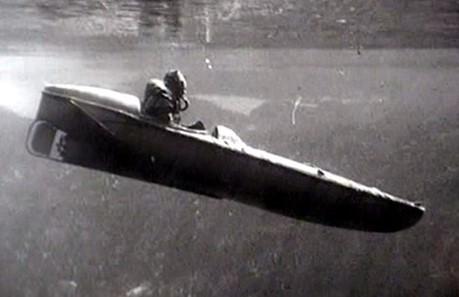
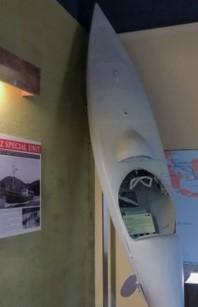
Scan this QR code to open this page on your phone ->

